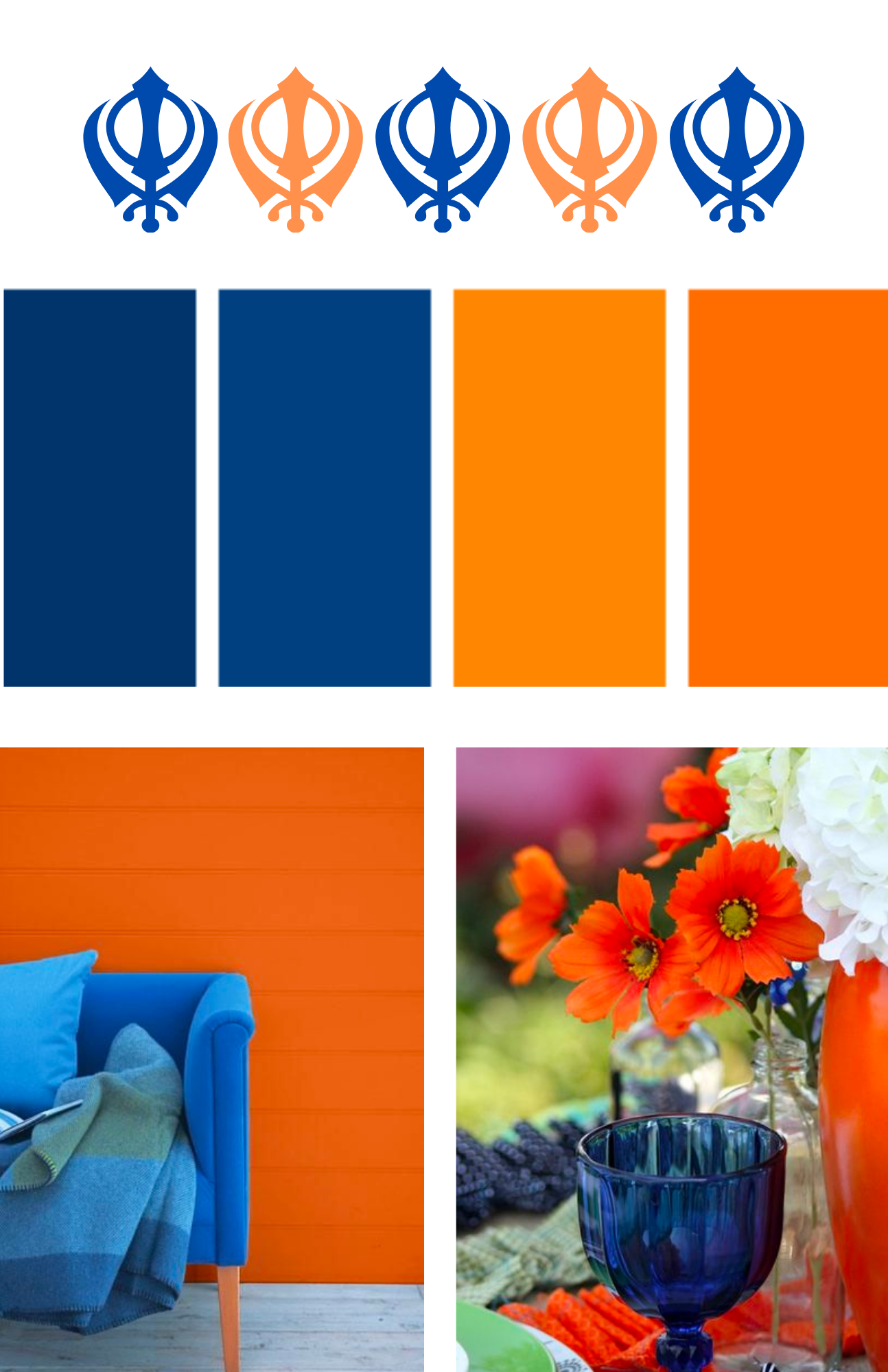The colours orange and navy blue are important colours in Sikhi and for Sikhs all over the world. The bright orange colour is known as saffron in English and kesari in Punjabi, whereas the navy is known as neela in Punjabi. Both kesari and neela are colours that you will see often in gurdwaras and during Vaisakhi. Often, the nishan sahib, or the Sikh triangular flag, that we see flying high at gurdwaras is also the colour kesari. So why do Sikhs choose these two colours and why are they important?
Key Colours in Sikhi
Navy Blue
Navy blue represents the Sikh warrior tradition. When Guru Gobind Singh established Khalsa on Vaisakhi in 1699, he raised a blue flag, which became a symbol for Khalsa and the Sikh warrior community. Blue was also the colour of Guru Gobind Singh’s horse, as often heard in stories about the Guru. Most notably, blue is the colour of the clothing of Nihangs or the armed Sikh warriors. They wear all blue clothing and a blue coloured turban, which has now popularly become synonymous with Nihangs.
Orange
The colour orange has been an important colour for many religions born out of India. From Hinduism to Buddhism, the colour orange has always represented wisdom, courage, and knowledge. It is for this reason that the colour orange, or kesari also became an important colour in Sikhi.
Kesari is also the colour that is most often used to depict the clothing, or the traditional unisex Sikh dress known as the Sikh Chola worn by Guru Nanak.
An important symbol in Sikhi, the nishaan sahib is also the colour kesari. Originally, the nishaan sahib was a shade of yellow, but when Guru Gobind Singh declared Khalsa, it was changed to the colour navy blue. However, during the reign of Maharaja Ranjit Singh, the colour of the nishaan sahib was changed to kesari. The colour has not changed ever since then.
Both the colours orange and navy blue are important colours in Sikhi. Both are often seen worn or adorned together and are prominent colours during traditional events and holidays, like Vaisakhi, Diwali, and Gurpurab. Not only do these colours have a rich history in Sikhi, they’re still used present day to represent a strong sense of community, togetherness and, and oneness.
Resources:
https://www.sikhnet.com/news/meaning-khalsa-colours
http://sanatansikhi.blogspot.com/2014/02/so-why-kesari-no-other-colour.html
https://www.sikhawareness.com/topic/9277-history-behind-white-blue-and-saffron-colors/

